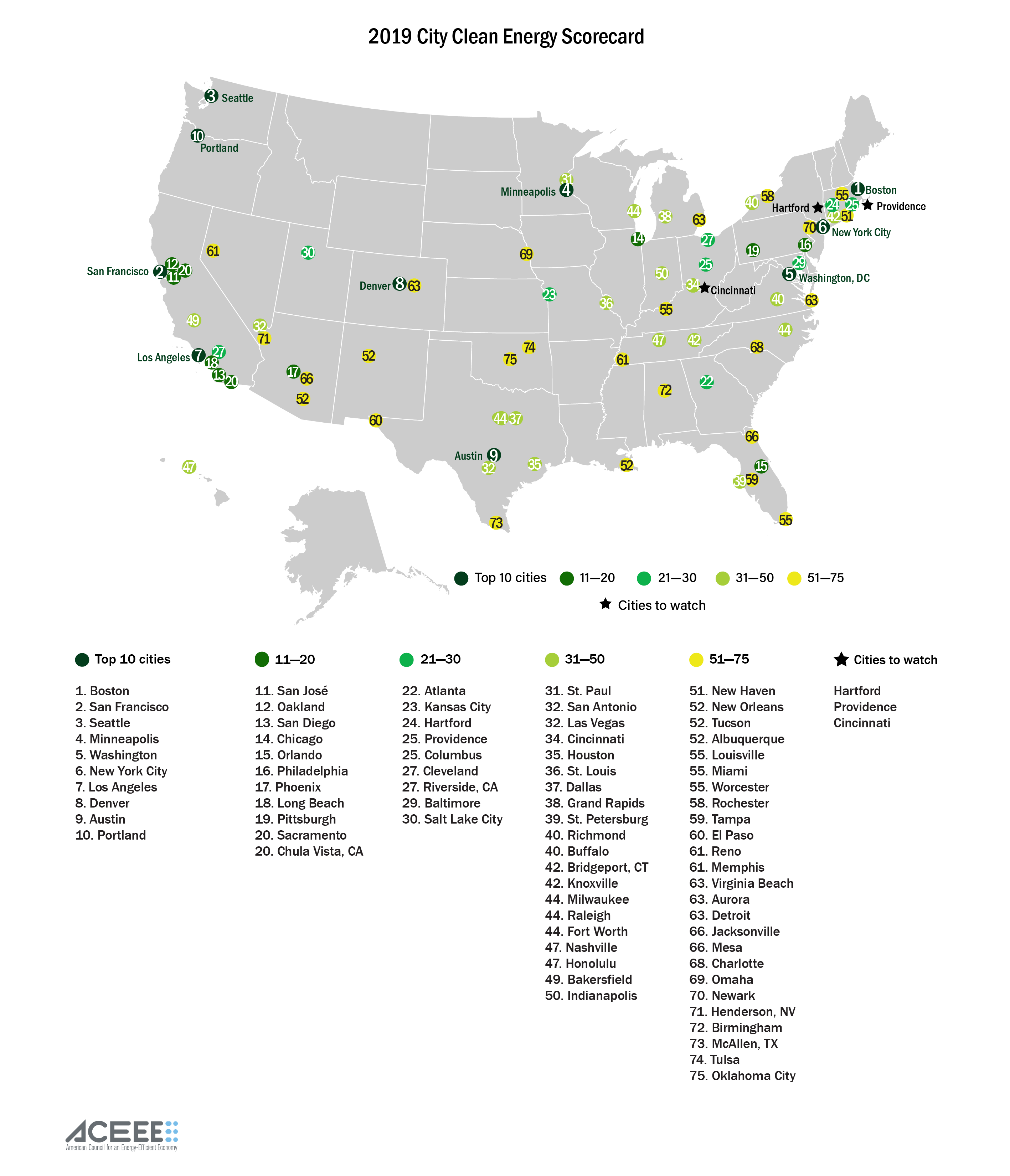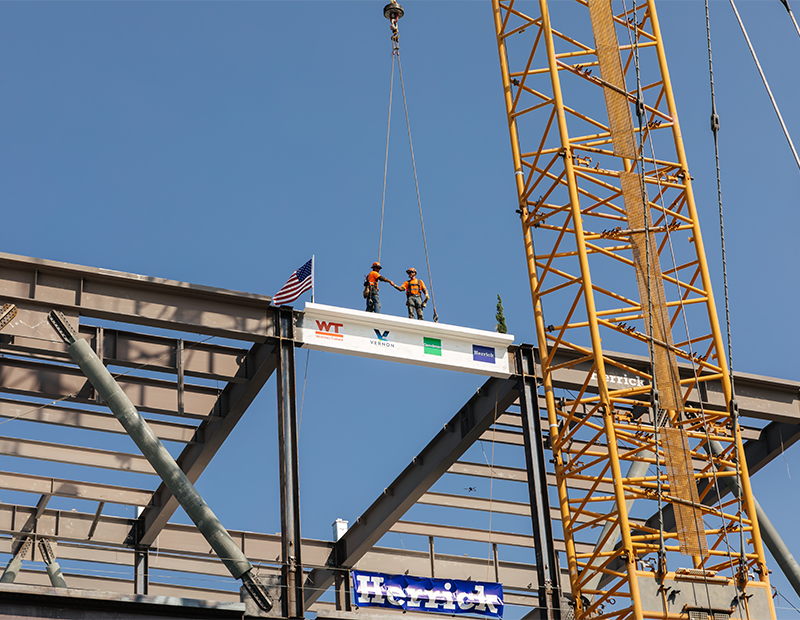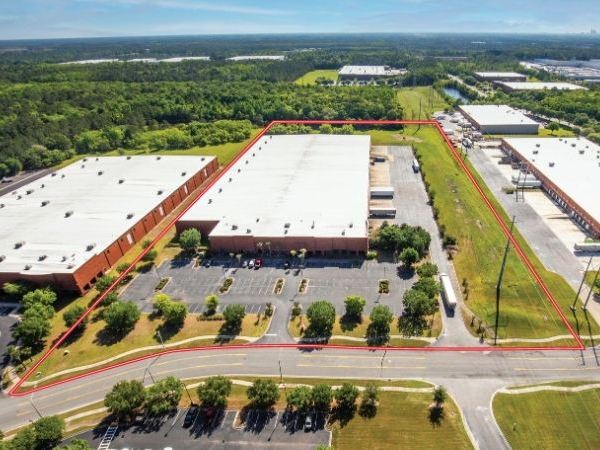Cities’ Clean-Energy Efforts Earn Mixed Report Card
Top cities for energy efficiency and greenhouse gas-reduction efforts, ranked by the American Council for an Energy-Efficient Economy.
Even though cities nationwide are ramping up their clean energy efforts, only a few appear on track to meet their goals for meeting the challenges of climate change. That is the central finding of the 2019 City Clean Energy Scorecard, a survey by the American Council for an Energy-Efficient Economy that tracks the progress of U.S. cities toward sustainability.
READ ALSO: California’s $1B Solar Incentives Target Affordable Housing
The 2019 Scorecard shows that cities took more than 265 initiatives to advance efficiency and renewable energy between January 2017 and April 2019. These range from more modest ones—such as Philadelphia’s teleworking for public employees—to cutting-edge policies like Washington, D.C.’s new high-performance standards for existing buildings.
On the downside, the analysis shows that most cities with climate goals are either not on track to achieve them or are not yet tracking progress: One-third (27 cities) of the 75 surveyed have yet to even set greenhouse gas reduction targets. Of the 48 with targets, 21 are not yet fully tracking their progress. The remaining 27 have data though eight are not projected to be close to achieving their targets and eight are anticipated to make substantial progress but still fall short. Of all, only 11 are on track to meet their greenhouse gas-reduction goals.
Top 10 Lists
Boston leads the top 10 cities, earning 77.5 points out of a possible 100. It is followed by San Francisco, Seattle, Minneapolis, Washington, D.C., New York City, Los Angeles, Denver, Austin, Texas, and Portland, Ore.
Cities to watch—those that did not make the top 10 but stand out for adopting several major clean energy policies and programs—include: Cincinnati, Hartford, Conn. and Providence, R.I. Hartford has created an energy improvement district, begun converting its streetlights to LEDs and has taken steps to improve location efficiency through improvements to the zoning code.
Cities that expanded efforts to save energy in new and existing buildings include: Las Vegas; Mesa, Ariz.; New York City; Philadelphia; Phoenix; Reno, Nevada.; San Antonio; St. Louis and Tucson, Ariz. In addition, Chicago, Denver, Minneapolis, New York City, Reno, Salt Lake City, San Jose and Washington, D.C., adopted efficiency requirements for existing buildings.
The ACEEE Scorecard is the organization’s fourth ranking of cities and its first since 2017. The latest scorecard has been expanded to include policy efforts to encourage renewable energy; their impact; and their investment in and engagement with low-income communities and communities of color.
New policy areas
In terms of local government operations, Austin, Boston and Orlando and Orlando share first place for having policies that increase efficiency in city government, procurement and asset management.
For community-wide operations, Washington, D.C. holds the top spot, followed by Seattle. Both metros have GHG reduction goals, strategies to mitigate urban heat islands and policies or programs to plan for distributed energy systems such as onsite renewables.
For building policies, Boston leads, followed by New York, San Jose, Seattle, Los Angeles and San Francisco. These metros have adopted or advocated for stringent building energy codes, devoted resources to building code compliance and used incentives or requirements to increase their use or renewable energy.
For energy and water utilities, San Diego ranks first. Rounding out the top five are Los Angeles; Boston; Chula Vista, Calif.; Minneapolis and San Francisco. Their energy utilities have efficiency programs delivering significant savings and institutions that work together to increase their use of renewable energy.
As for transportation policies, San Francisco ranks first, followed by Washington, D.C., Boston, Portland and Seattle. These cities promote public transit, efficient vehicles and vehicle infrastructure, as well as freight system efficiency.








You must be logged in to post a comment.